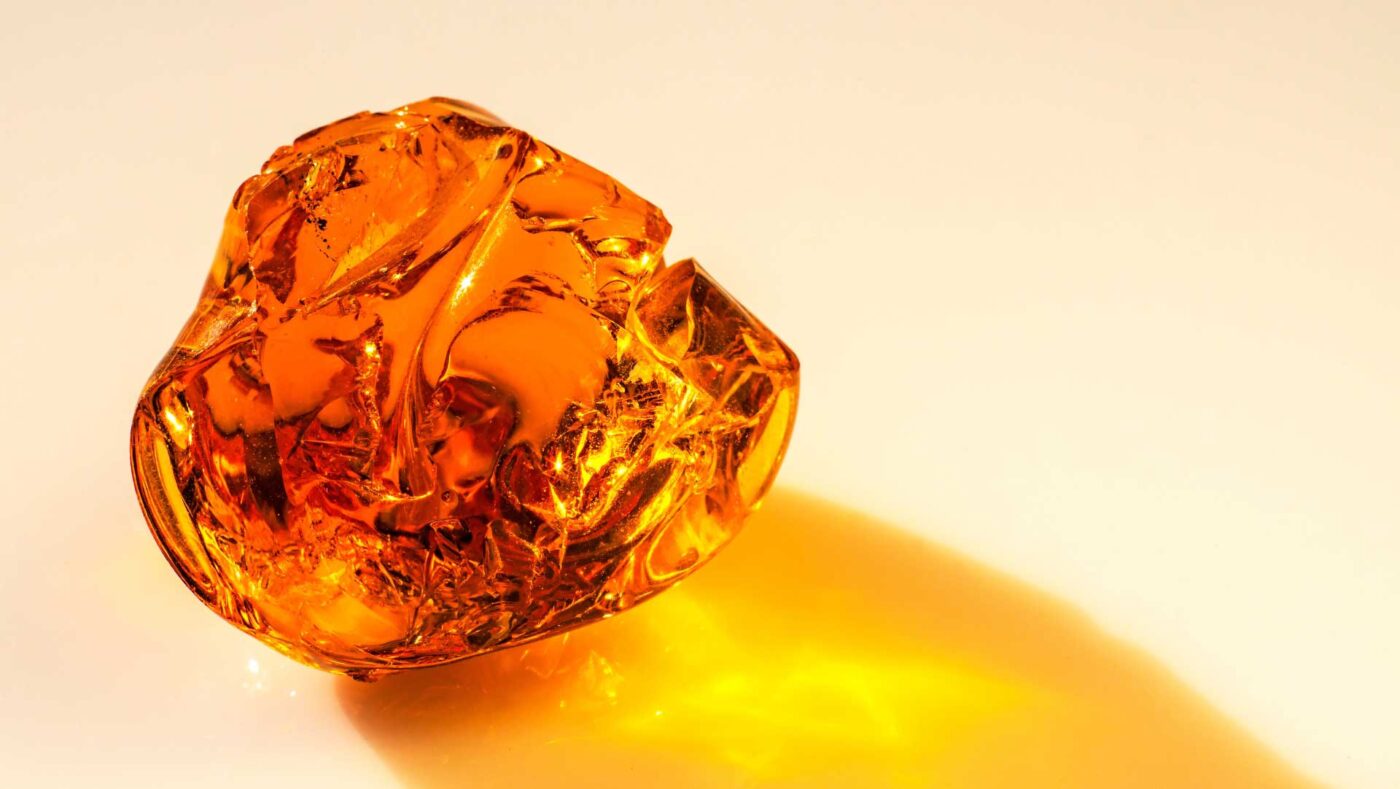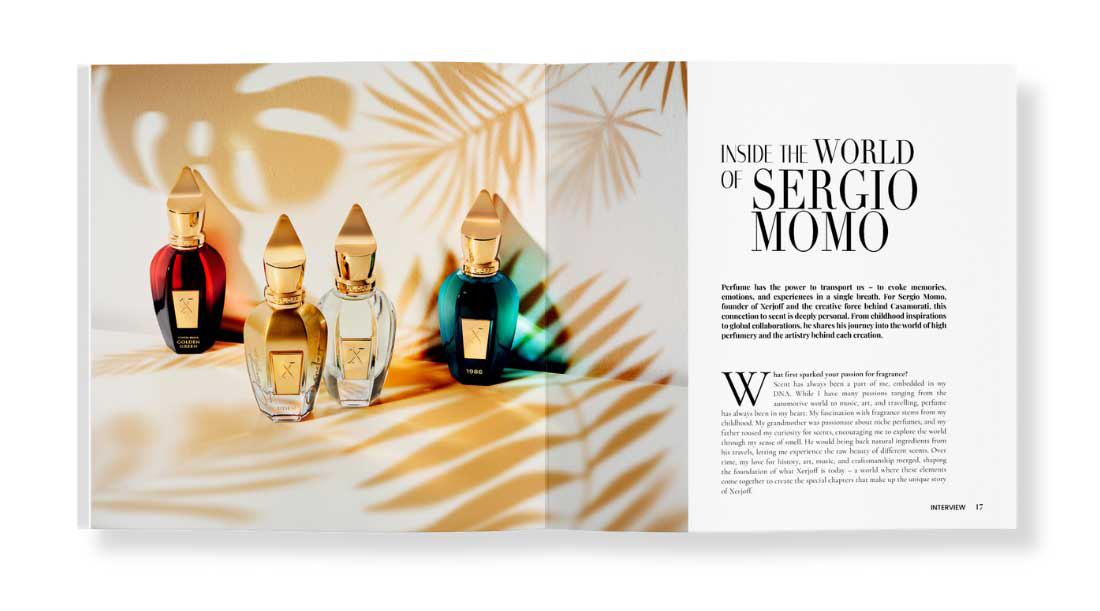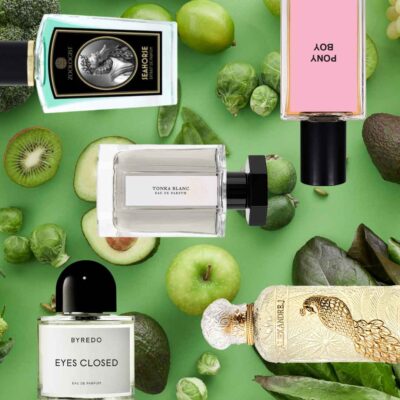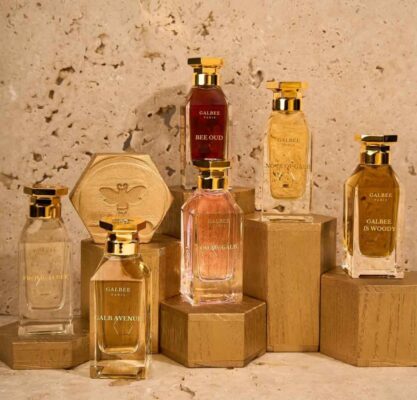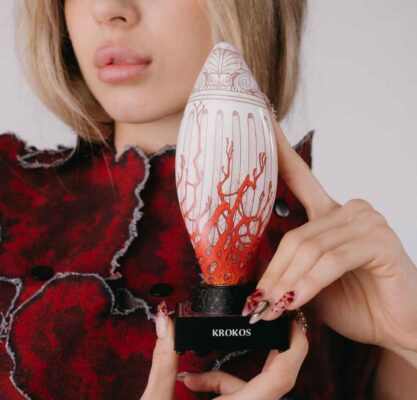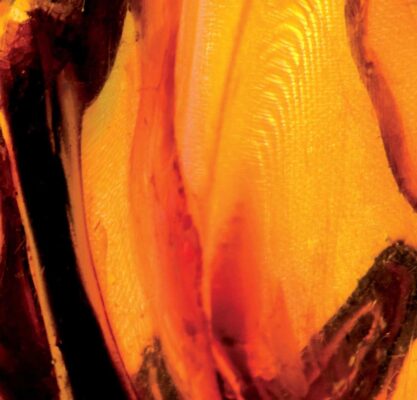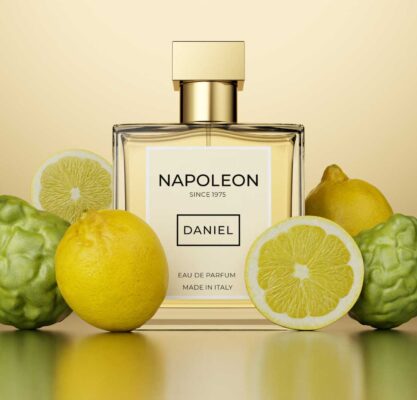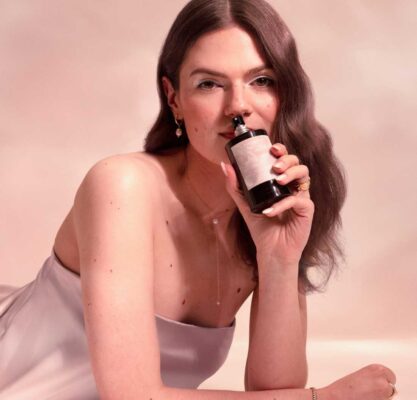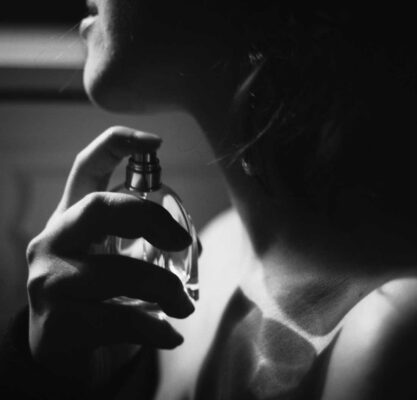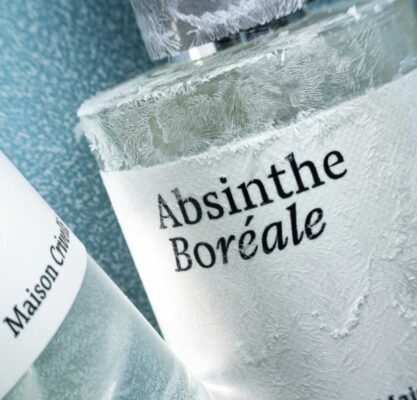AMBERGRIS, AMBER, AMBROXAN & AMBRETTE:
WHAT’S THE DIFFERENCE IN PERFUMES?
Navigating the world of fragrance ingredients can be a bit confusing at times, especially when it comes to fragrance ingredients that bear strikingly similar names. From the niche perfume community we heard this is mostly the case for ingredients such as ambergris, amber, ambroxan, and ambrette. While being part of the same olfactory family called amber, these ingredients each have their own distinct characteristics and olfactive profiles. So, what exactly is the difference between ambergris, amber, ambroxan, and ambrette?
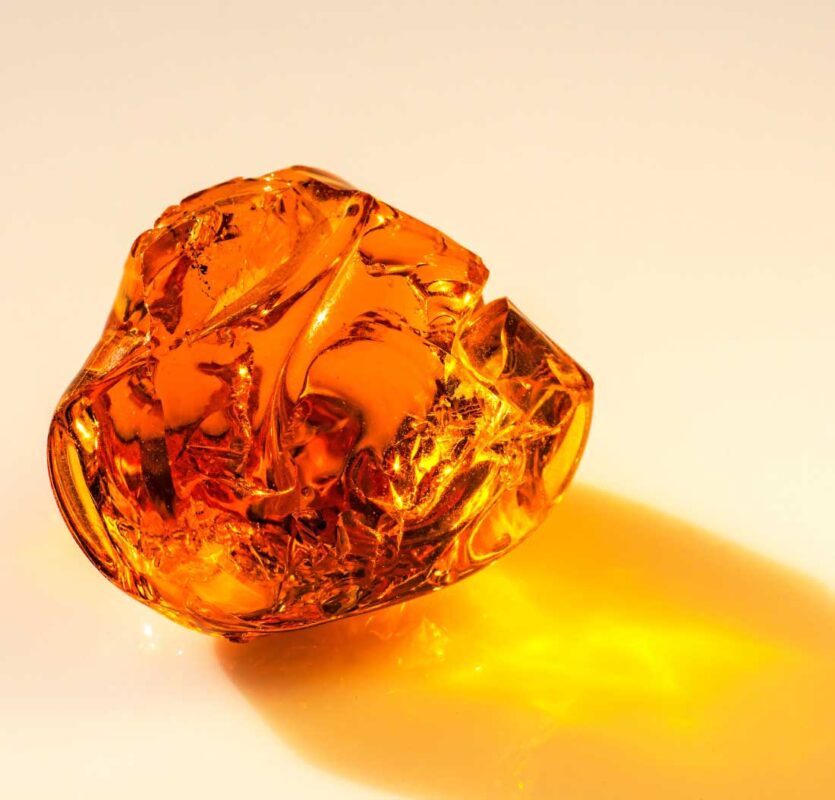
AMBERGRIS
Ever heard of a fragrance ingredient that is derived from whales? Discover ambergris, a waxy substance formed in the digestive system of sperm whales. How exactly this ingredient is created remains a mystery to this day. However, it’s believed to be a protective substance that protects whales’ intestines against irritations caused by eating squid beaks and cuttlefish.
As the sperm whale’s intestinal capacity can only handle smaller quantities of ambergris, the marine mammals presumably reject the larger pieces. The result? These pieces of ambergris then float in the sea and eventually wash up on coastlines. When fresh, ambergris has a soft and waxy texture, ranging from a blackish brown to a greyish colour. Due to its exposure to saltwater and sunlight, over time, the colour, texture, and scent can gradually change. This process of ageing and weathering turns ambergris into a solid, white-coloured mass with a more enhanced fragrance, making it even more rare and high-value in the perfume industry. A kilo of ambergris is estimated to be worth around $40,000.

While ambergris shares some warm, sensual, and sweet characteristics with amber, it distinguishes itself through its musky, animalic, and marine notes. As a perfume ingredient, it has a characteristic sweet and earthy scent, and an exceptional ability to stabilise and prolong the scent of other perfume ingredients. This is why ambergris most often serves as a base note in perfumes, adding depth, complexity, and longevity.
Due to environmental concerns, the trade in natural ambergris is strictly regulated nowadays. This has limited the availability of this precious ingredient even more, leading to the development of synthetic alternatives.
While ambergris shares some warm, sensual, and sweet characteristics with amber, it distinguishes itself through its musky, animalic, and marine notes. As a perfume ingredient, it has a characteristic sweet and earthy scent, and an exceptional ability to stabilise and prolong the scent of other perfume ingredients. This is why ambergris most often serves as a base note in perfumes, adding depth, complexity, and longevity.
Due to environmental concerns, the trade in natural ambergris is strictly regulated nowadays. This has limited the availability of this precious ingredient even more, leading to the development of synthetic alternatives.
AMBER
Many people know amber as the precious gemstone. And while the fragrance note amber evokes a warm and slightly resinous scent reminiscent of this gemstone, it doesn’t originate from the gemstone itself. Instead, it’s a so-called fantasy fragrance note, carefully crafted using a blend of various natural and synthetic ingredients as an alternative to ambergris. The exact formula for amber can vary widely among perfumers and fragrance houses. This often makes it a challenging fragrance note to tell apart in a composition, as its smell can differ significantly. The complex blend typically includes ingredients like vanilla, benzoin, and labdanum, but can also include tonka bean for a sweeter, almond-like scent, patchouli for an earthy and woody undertone, or frankincense for a resinous touch.
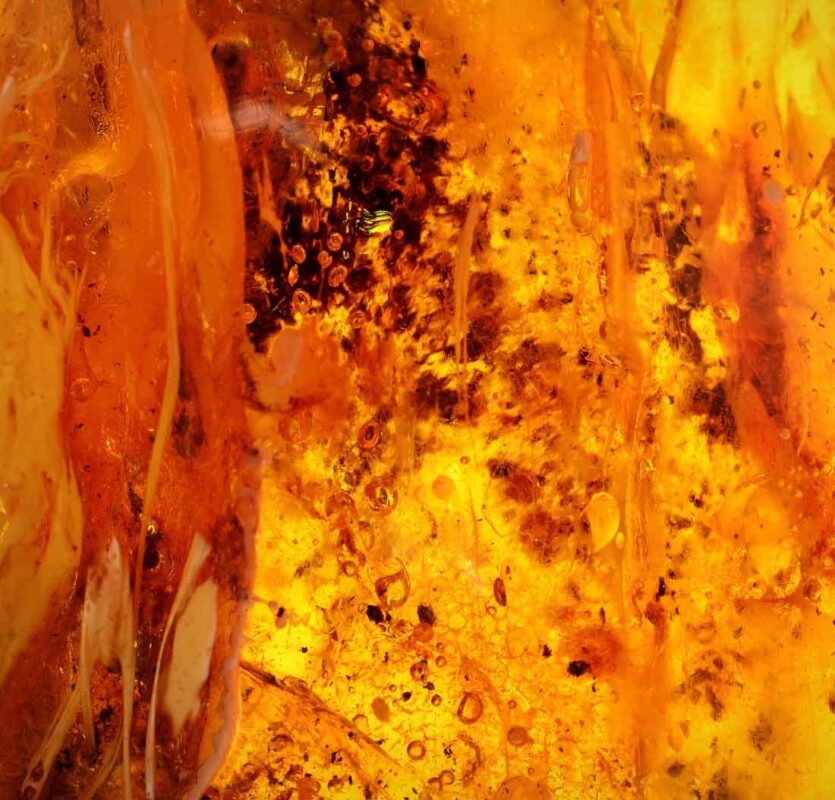
Generally, amber has a unique olfactory character with a warm, resinous, sensual, sweet, and woody scent. It’s a remarkably versatile fragrance note that blends seamlessly with an array of other ingredients to add depth, warmth, and comfort. This is also why amber notes mostly serve as a base note in some of the finest winter perfumes!
As the name already implies, this fragrance note was also one of the key inspirations behind the fragrance family known as ‘amber’.
AMBROXAN
One of the most renowned and widely used synthetic alternatives to ambergris is ambroxan. It closely resembles the qualities of ambergris, mirroring its warm, woody, and subtly sweet scent. Much like ambergris, ambroxan possesses a versatile character, matching smoothly with an extensive range of fragrance notes, while enhancing the fragrance’s longevity and strength.
To capture the essence of ambergris, ambroxan is made from the natural precursor ambrein. This extraordinary component is responsible for the unique aroma of ambergris. Although ambrein can also be found in whale secretions, it is primarily sourced from specific plants, such as the clary sage plant. The extraction involves a series of chemical processes, including oxidation, to reshape its molecular structure. The resulting compound is then purified, after which the desired aroma chemical ambroxan is isolated.
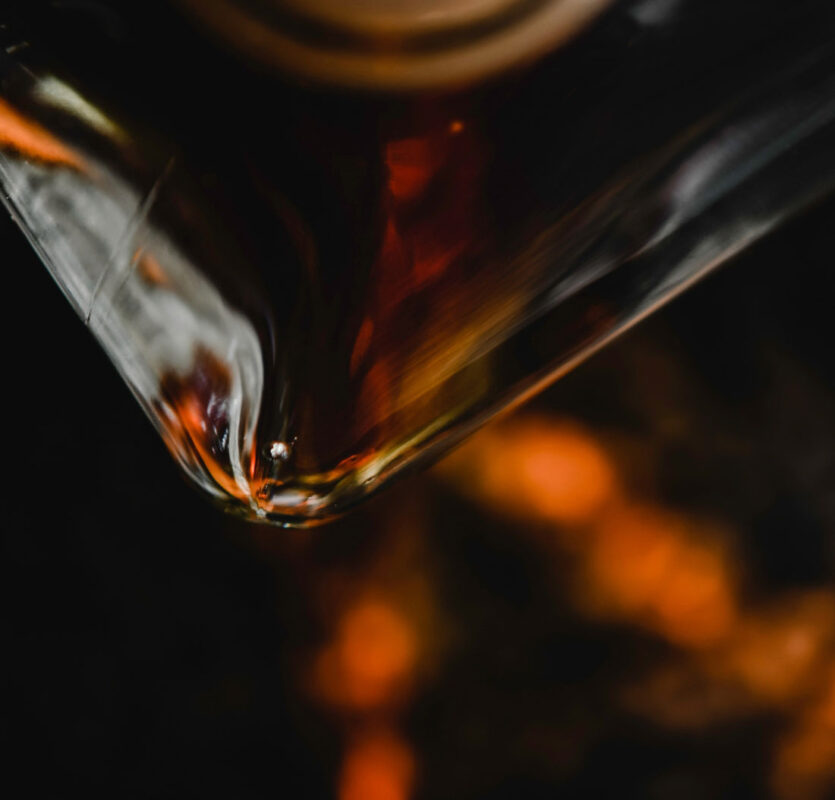
In its pure form, ambroxan looks like a crystalline substance, ranging from white or pale yellow crystals to a powder. As with amber, ambroxan’s formula can vary among fragrance companies and is often customised to fit the character of a particular fragrance.
AMBRETTE
Ambrette is primarily derived from the Hibiscus Abelmoschus, a plant that grows in Asia.. This botanical marvel, which is used to produce soft fragrance notes, is renowned for its small, teardrop-shaped seeds with a light to darker brown colour and a slightly pointed end. The seeds are slightly oily to the touch, which is caused by the plant’s aromatic ambrettolide oil, which carries its celebrated scent. Ambrette is mostly used as a heart or base note, and in addition to it being extracted in its natural form, ambrette can also be crafted as a synthetic ingredient in a laboratory.
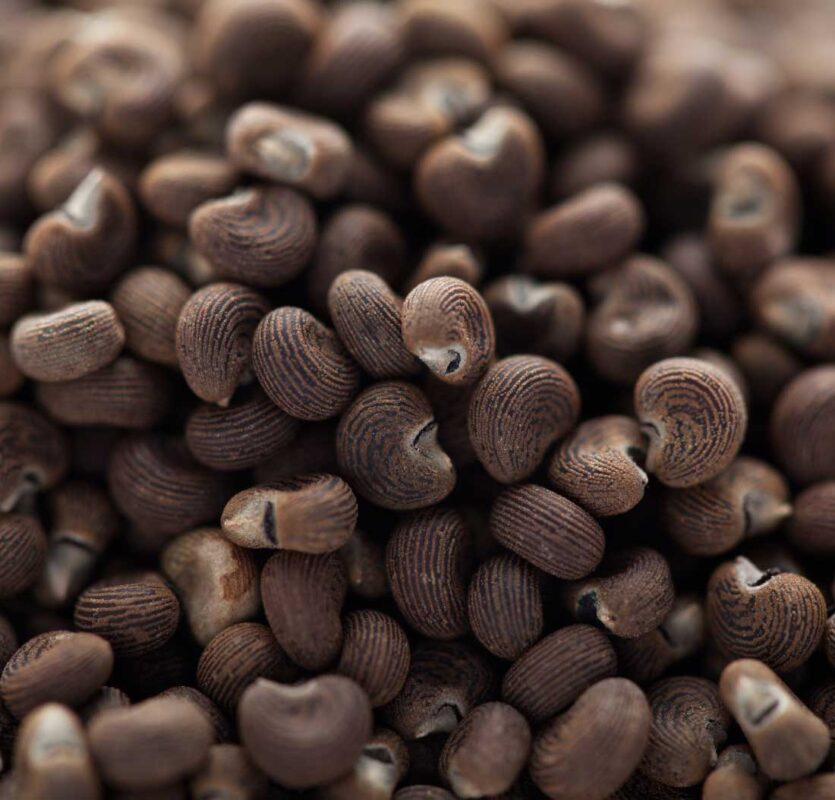
Thanks to its synthetic nature, which means it doesn’t require the exploitation of natural resources, ambroxan offers a sustainable alternative to ambergris. This also assures consistency and exceptional quality in comparison to natural ambergris, which can fluctuate in quality, aroma, and availability. Moreover, as producing synthetic ambergris costs approximately 100 times less than sourcing and processing its natural counterpart, it’s a much more cost-effective alternative.
READ MORE ABOUT RAW MATERIALS IN
LE PARFUM MAGAZINE CHAPTER 6
Discover three surprising scent notes that add a playful flair and unexpected depth to warm-weather creations: yam, hinoki, and mango lassi…

